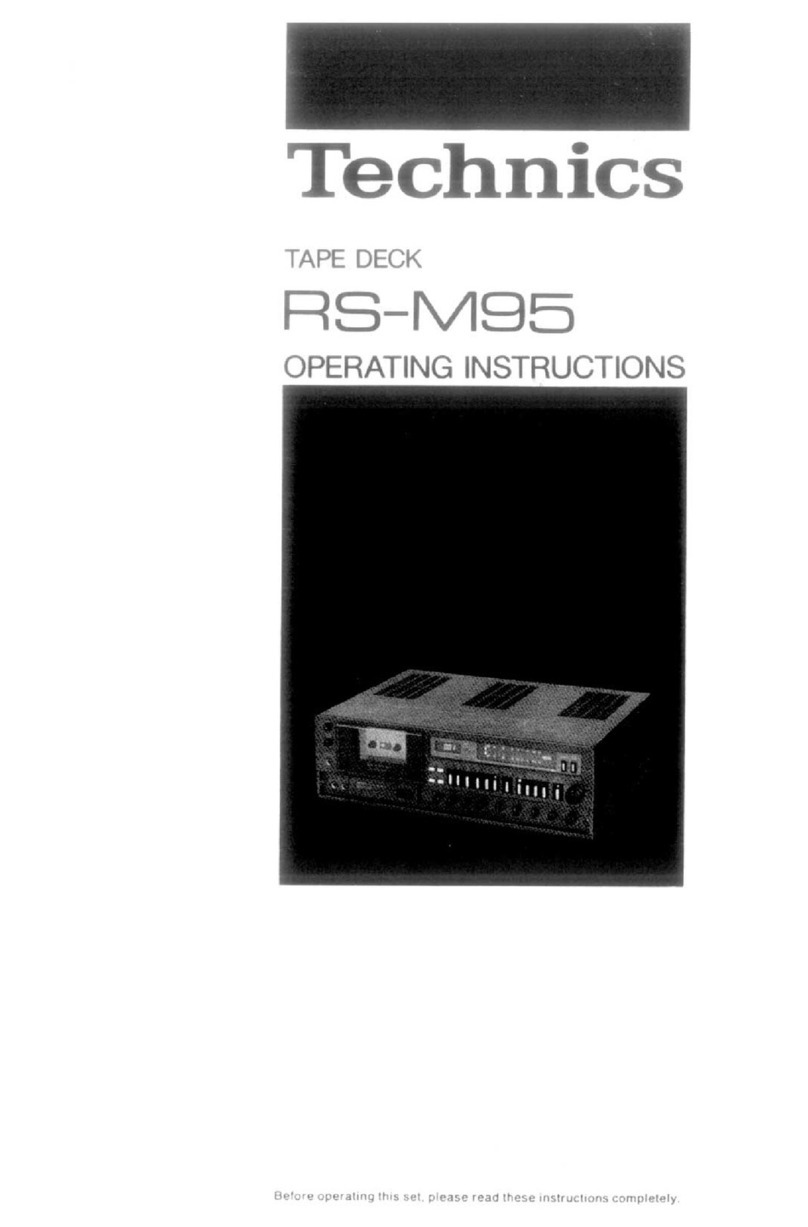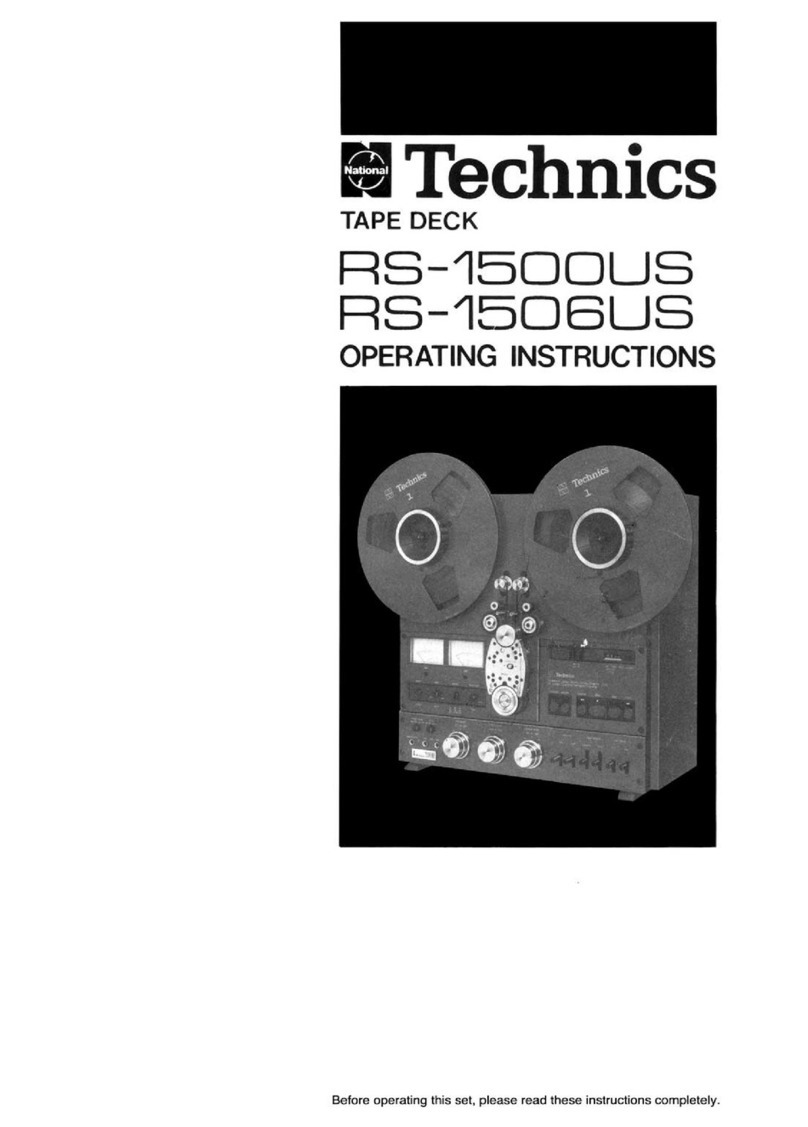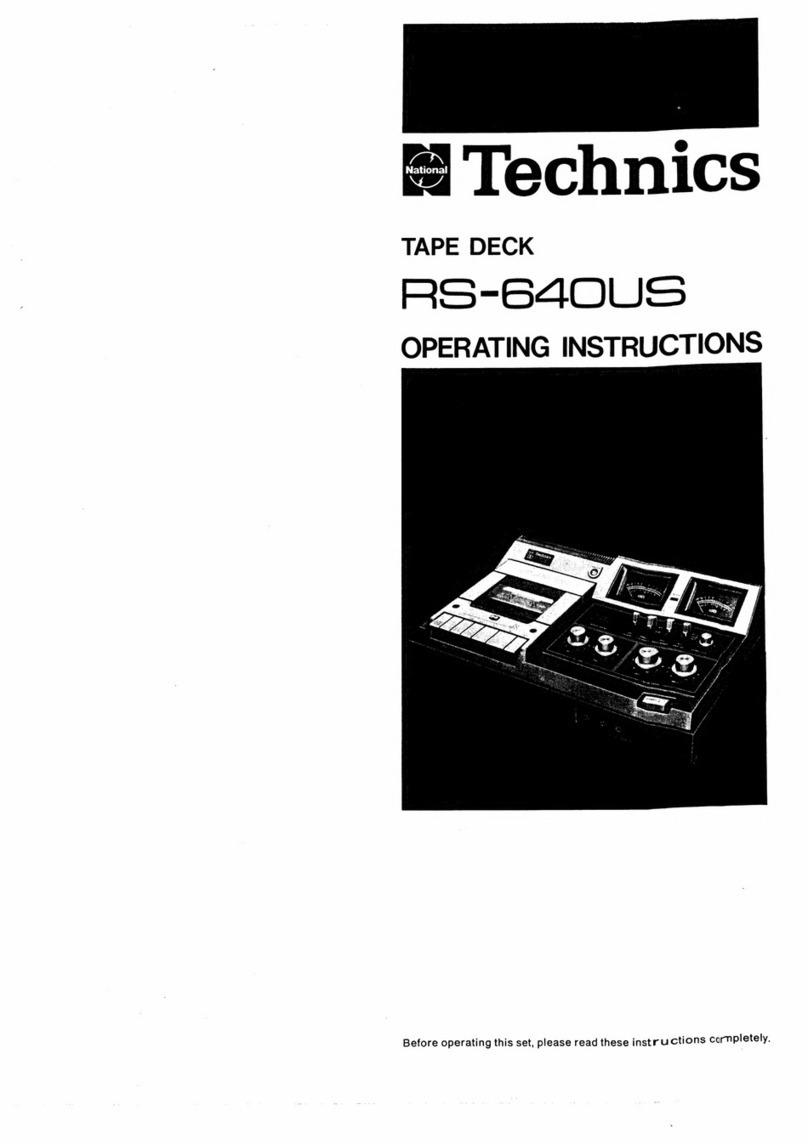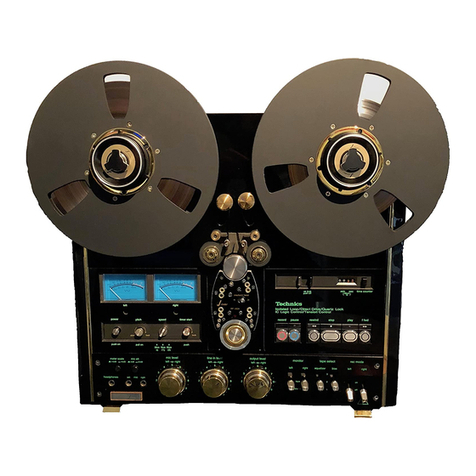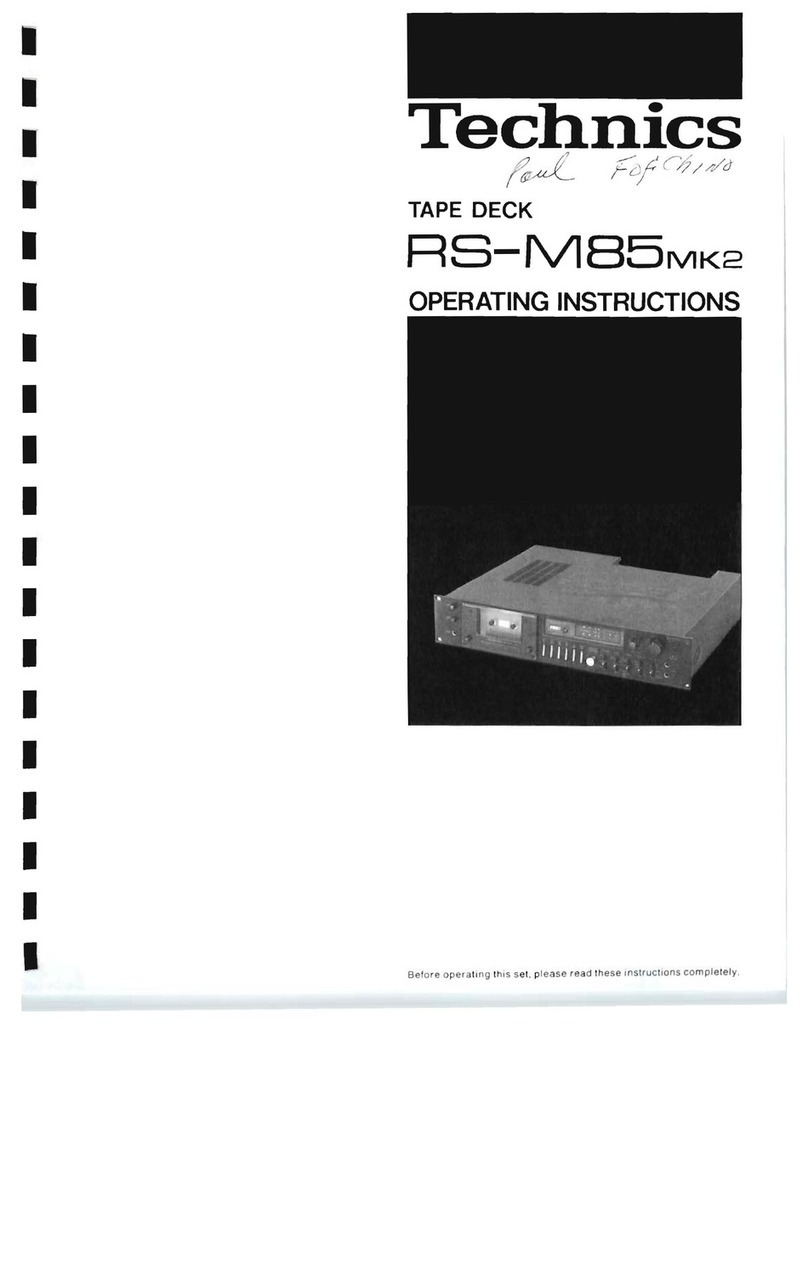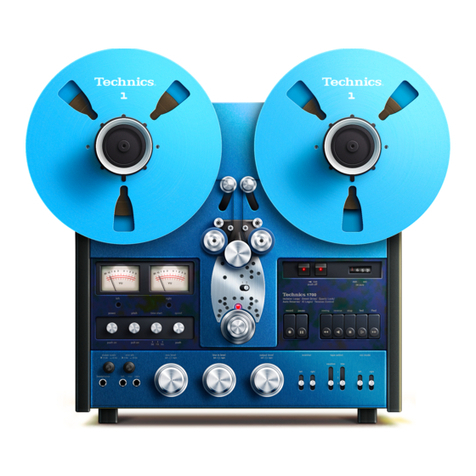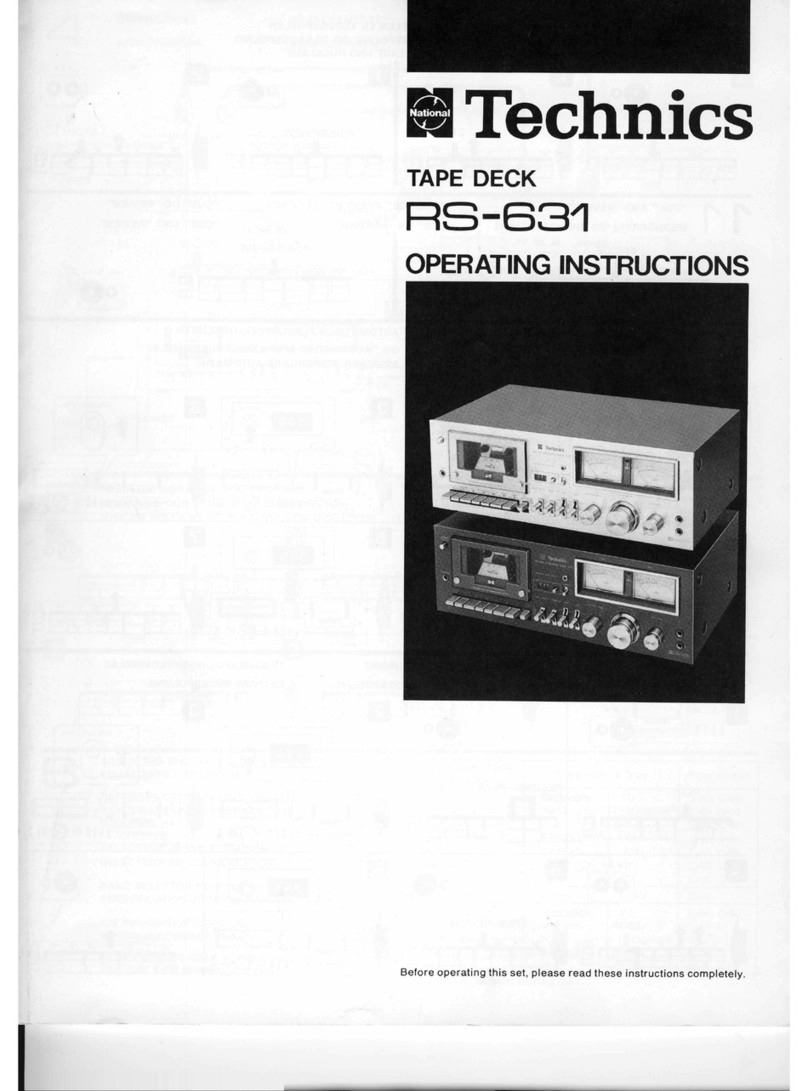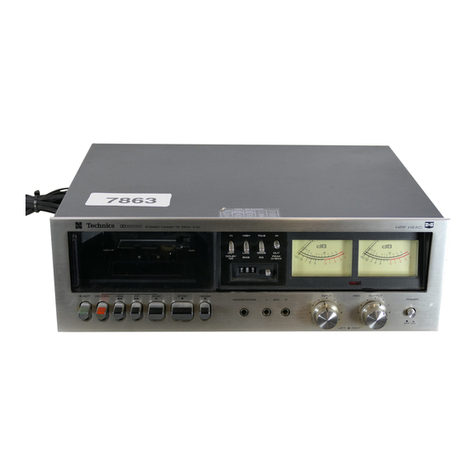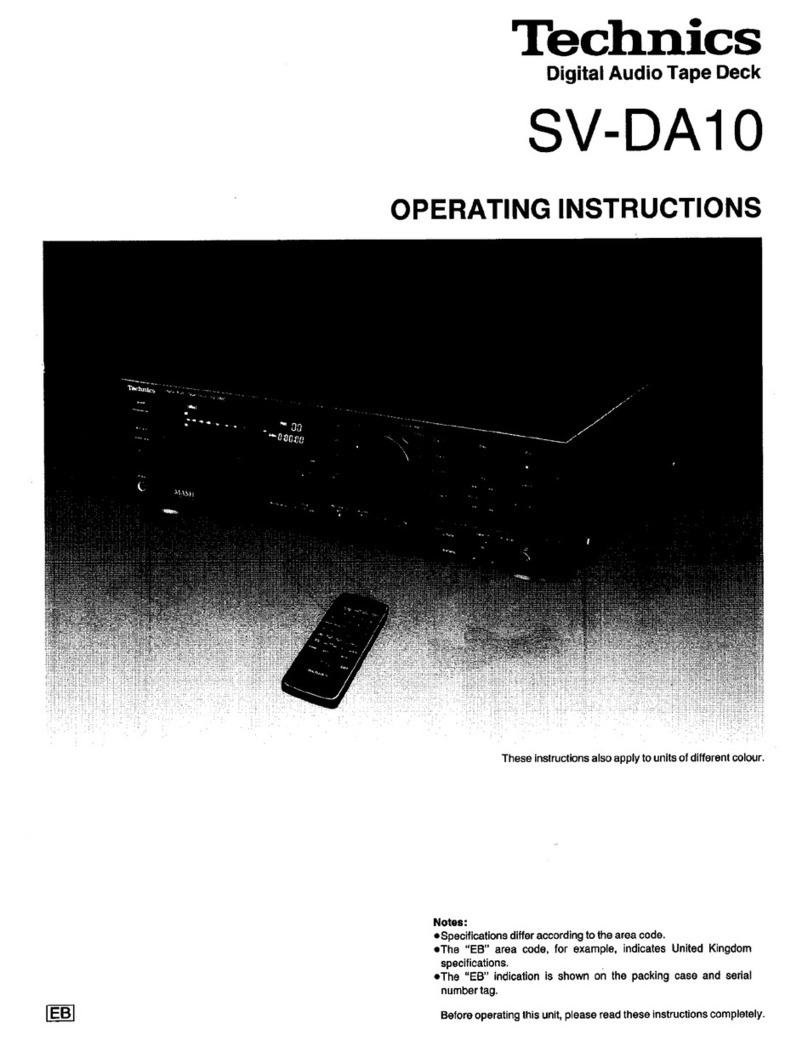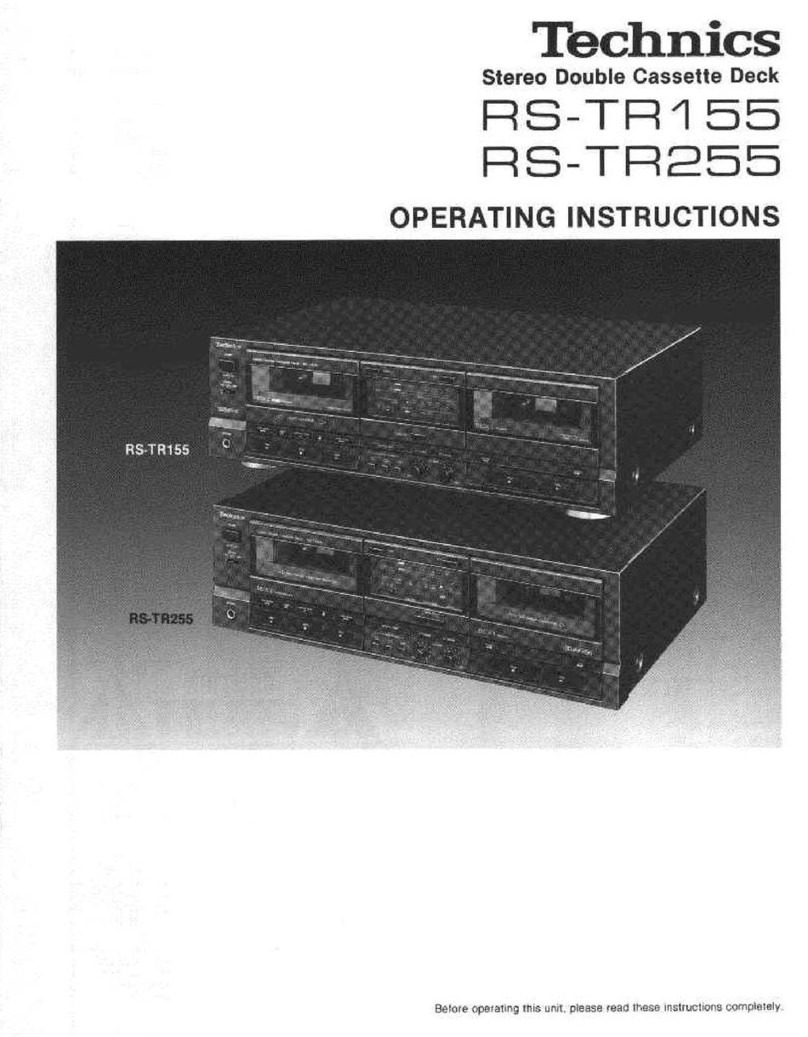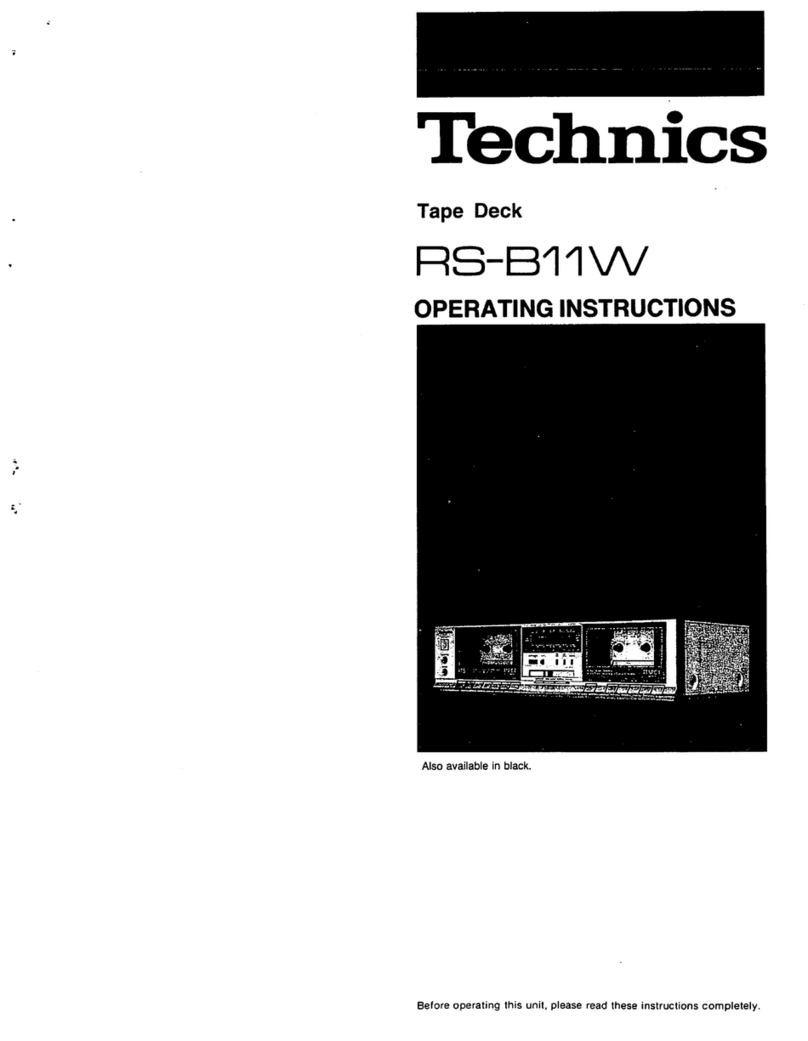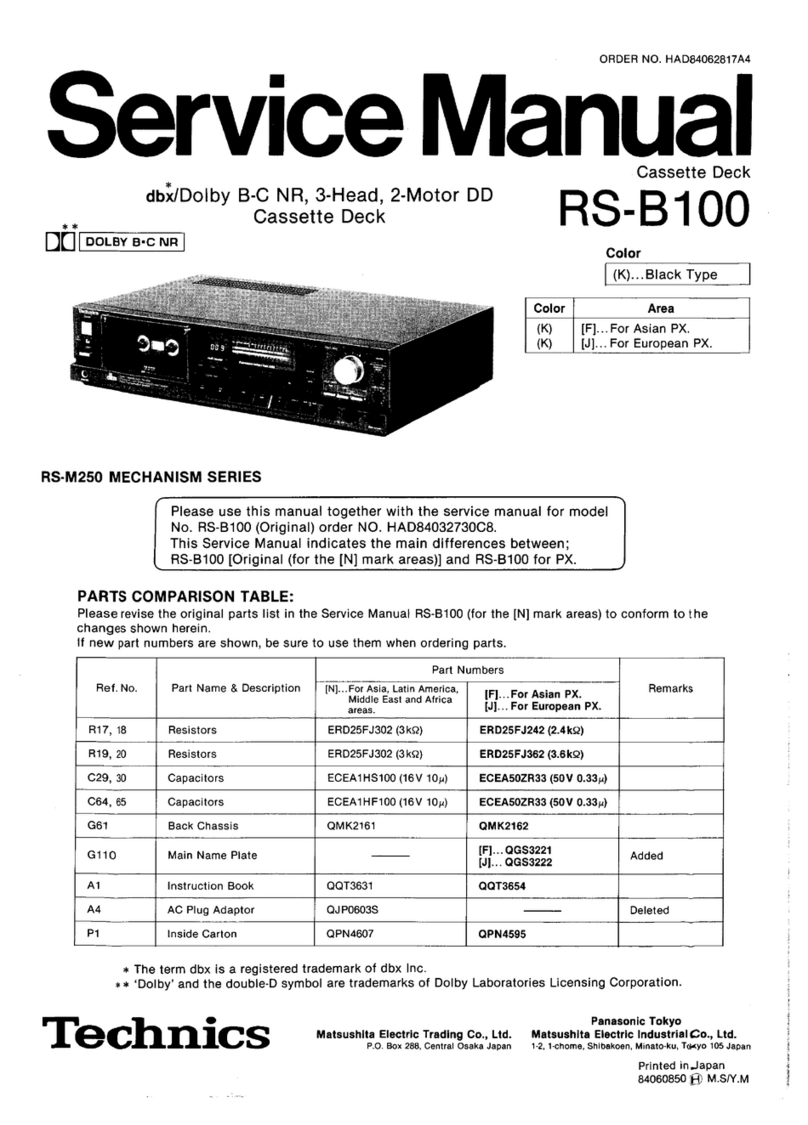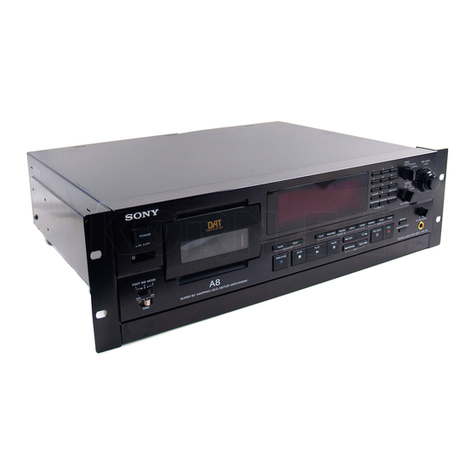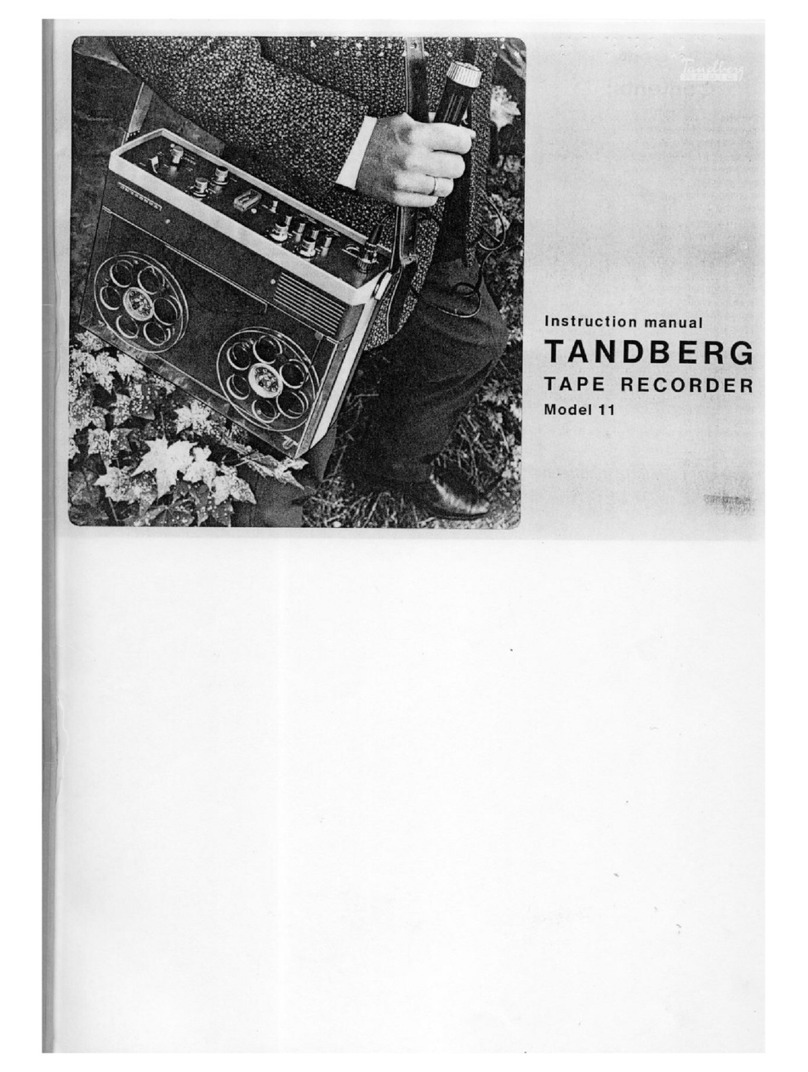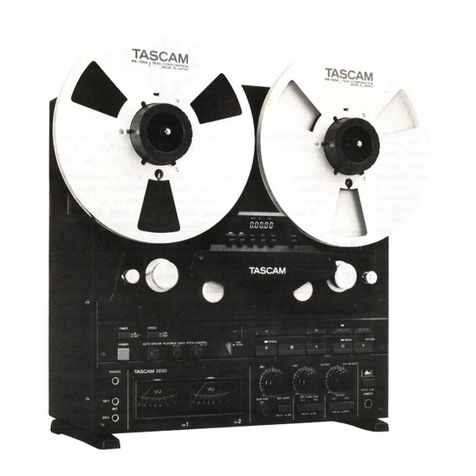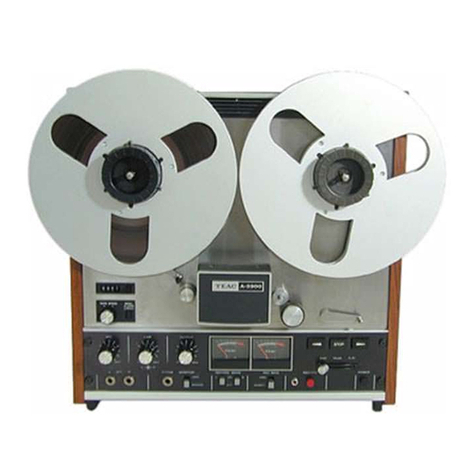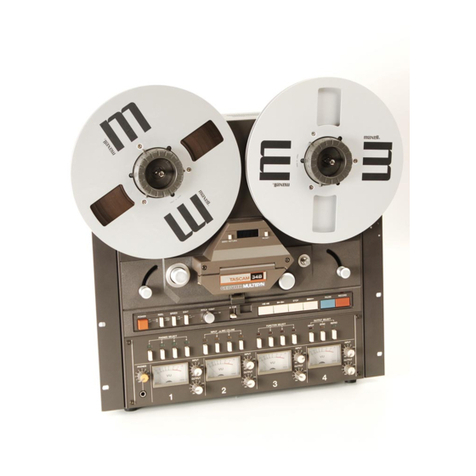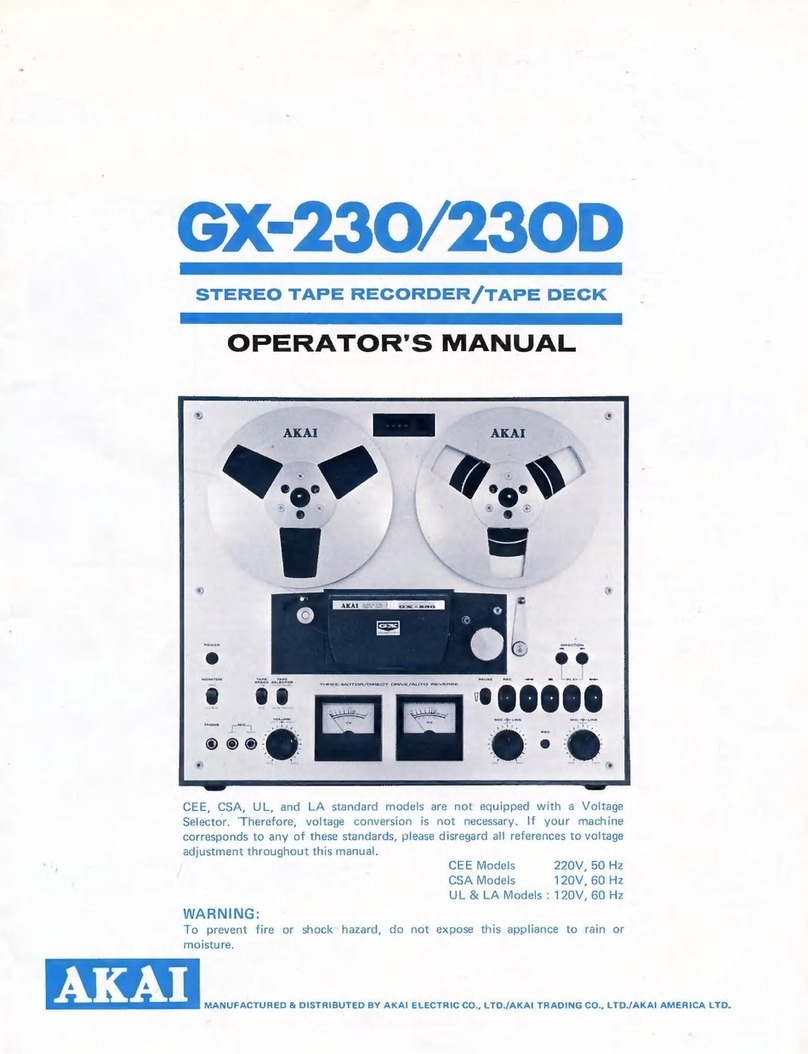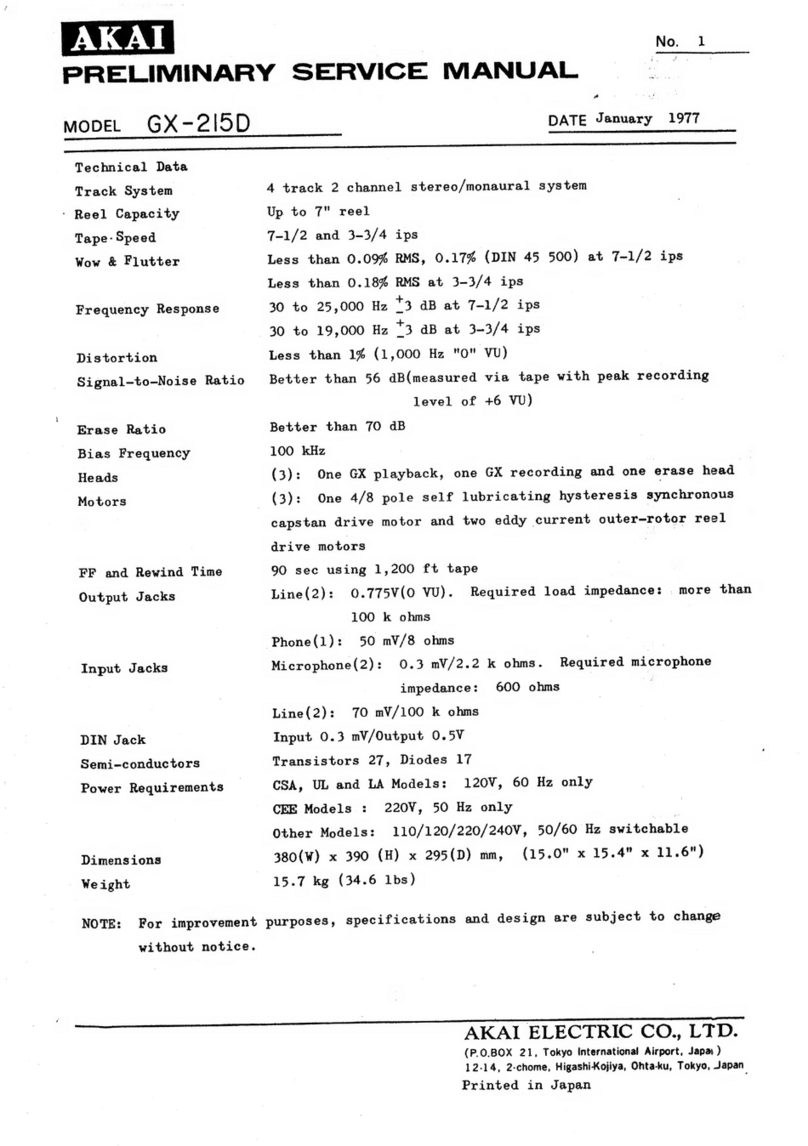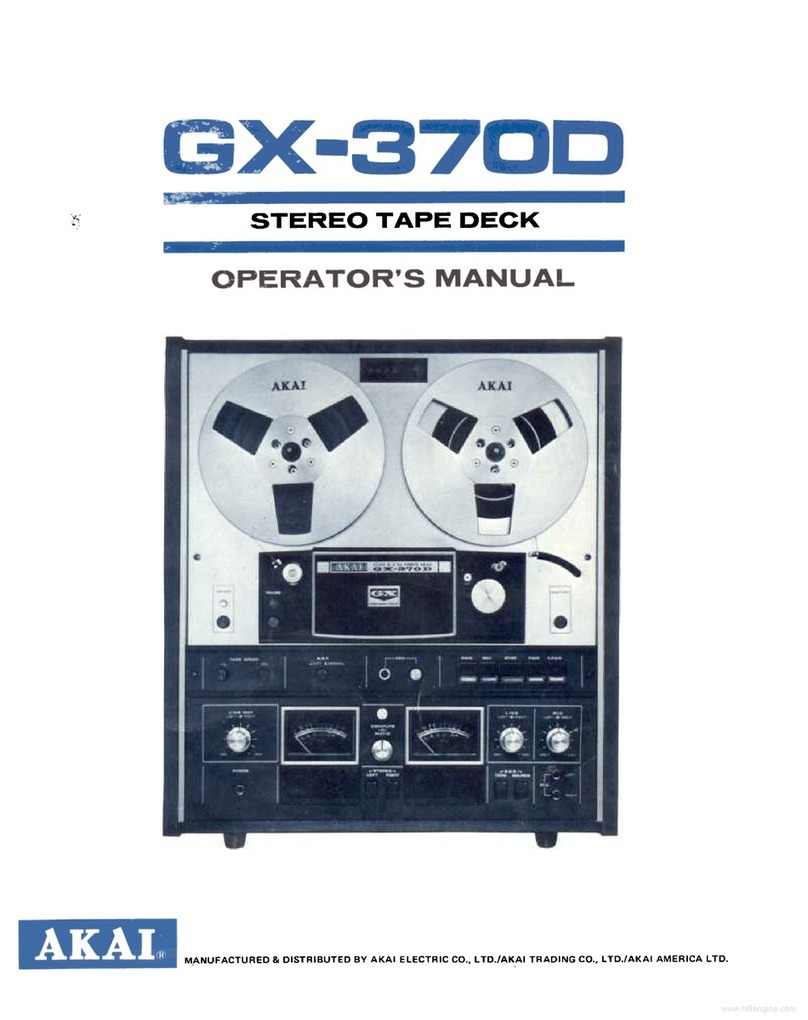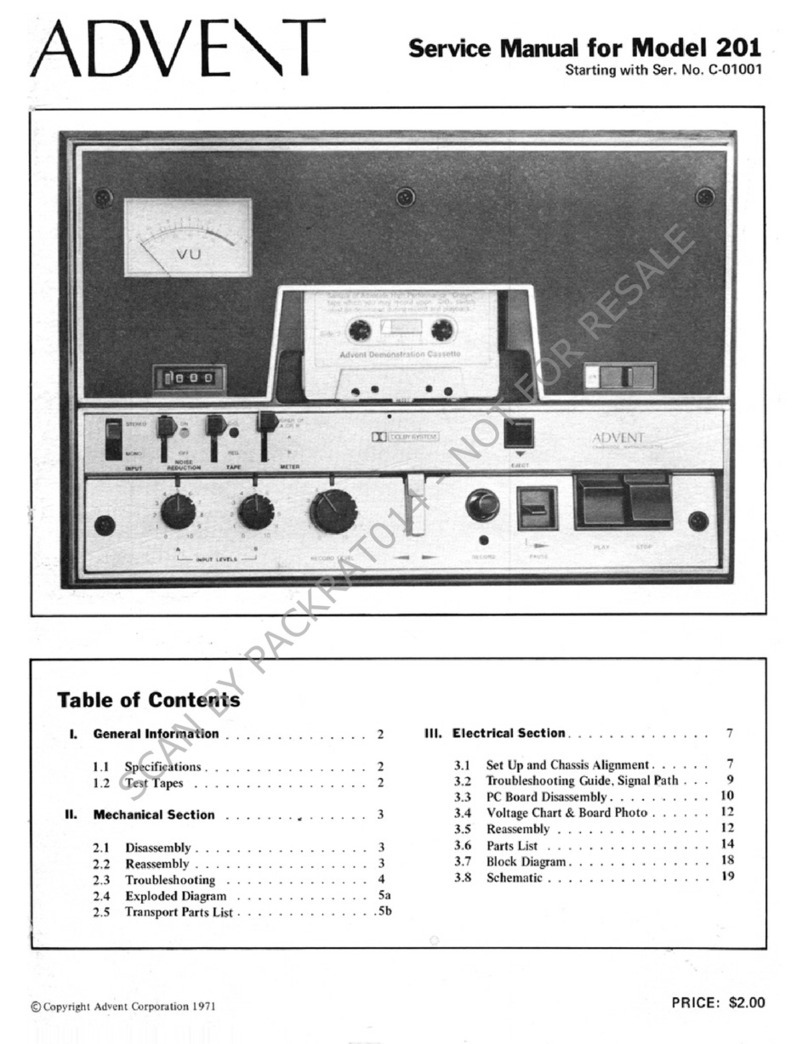"disc" position for "dbx encoded disc,' play
This unit comes with a "disc" position on the Noise Reduction
Selector Switch for playing "dbx encoded discs" *.
When this selector switch is set to the position given in the
figure below, "dbx encoded discs" can be played
Noi se
Dolby NR
Follow the procedure given below
(1) Set the recording output selector swilch on the stereo
amplif ier to the "phono" position and set the input selector
switch or tape monitoring switch to the "tape" position.
(2) Set this unit's input selector to the "line" position and set
the Noise Beduction Selector Switch to the "disc" position.
(3) Start operating the turntable.
(4) Adjust the unit's lnput Level Controls so that the Fluores-
cent Meter Scales def lect to near ,,0 dB".
(5) Adjust the volume using the volume control on the stereo
amplifier. Now set the mechanism to the stop mode.
Some open-reel type dbx encoded tapes are now available
f rom music stores These tapes can be played back just like the
records by setting the Noise Reduction Selector Switch to the
"disc" position
Notes:
olf the Noise Reduction Selector Switch is set to the
"disc" position during ordinary tape playback, the
playback sound will not be audible
olf the mechanism is operated during "disc" play, it will
work but the tape playback sound will not be audible.
lf the Record Button is depressed and the deck set to
the recording mode, the decoded sound (the now
restored original sound)will be recorded When playing
back this sound, set the Noise Reduction Selector
Switch to the "out" position
.lf the Record Button is depressed when you are
listening to records with the Noise Reduction Selector
switch at the "disc" position, the sound will be cut off
for an instant This is not a malfunction
aTo record "dbx encoded records" using the dbx Noise
Reduction System, first set the Noise Reduction
Selector Switch to the "out" position and start
recording This makes it possible to record in the
encoded state. For playback, set the selector switch to
the "tape" position. The recording level should be set
as follows
First set the Noise Beduction Selector Switch to the
"disc" position and adjust the lnput Level Controls to
around "-3dB" so that the Fluorescent Meter Scales
meter pointers do not exceed "0dB', at peak times.
Now set the Noise Reduction Selector Switch to the
"out" position again and proceed with the recording.
Sounds monitored while recording "dbx encoded
records" are encoded (compressed) sounds, not
decoded sound
* ''dbx encoded discs (records)" dif f er f rom ordinary records in
that dbx noise reduction encoding (compression) is per-
formed when the signals are cut into the records During play,
these signals pass through a decoder and the original sound
is restored. This makes for a virtually noise-free sound, a
wide dynamic range and better music reproduction
"Metal tape" magnetic ,,Metal tape,, f requency response
characteristics example oda: r6onwh/m
"Meta!tape"
Advantages and magnetic characteristics of ,,Metal
tape"
1 . Maximum output level (MOL) is greater at all frequencies.
2. Excellent frequency response characteristics at high input
level.
3 Wide dynamic range at high frequencies.
4. Excellent signal-to-noise ratio at high frequencies.
5 Low distortion
Technological developments to accommodate
"Metal tape"
"Metal tape" is a totally new kind of high performance tape,
and conventional cassette tape decks cannot sufficienily bring
out its performance potential.
Our company has succeeded in developing the foilowing
technology to exploit the advantages of "Metal tape', to its
fullest extent.
1. Development of the SX head featuring minimal
distortion with high input signal levels.
The SX head employs permalloy and it features a high
saturation magnetic f lux density and also a superlative wear
resistance. lt was developed especially for the new breed of
"Metal tape".
2. Development of high-ef f iciency sendust erase head.
Sendust is a material with a high saturation magnetic flux
density and it is capable of extremely eff icient erasing even
with "Metal tape" with a high maximum output level
3. The power in the bias oscillator circuit has been
increased.
A word about "Metal tape"
Conventional cassette tapes can be broadly classified into 2
categories according to the magnetic material coated on the
tape surface: the ferric-oxide ( 7 -FezOs) type, including
ordinary LH tape, etc.; and the chrome-dioxide (CrOz) type,
including XA tape, etc.
Continued technological advances have been made in an
attempt to develop these tapes to a high level of performance,
but recently there has been a recognized need for the
development of a new material to improve performance much
further
ln response to this need, ',Metal tape,'has been developed as
a new kind of tape, employing a magnetic alloy of pure iron (Fe)
as the main component in the magnetic substance. ln
comparison with conventional cassette tape, ,,Metal tape,,can
record a far greater amount of information at a high density. As
a result, the maximum output level (MOL) has been improved
throughout the entire range, and, in particular, the frequency
response characteristics at high levels and the dynamic range
in the high range have been greatly improved. This means,
therefore, that a remarkable improvement of sound quality has
been made possible (lt should be noted that the tape base and
parts of the tape other than the magnetic substance are com_
posed of the same material as previously used.)
-4-

